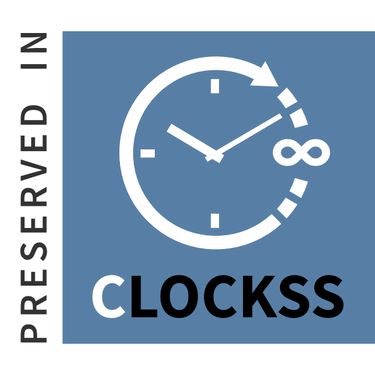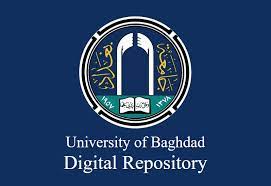The Effect of Some Dietary Supplements Accompanied by Exercises According to the Biological Rhythm in its Physical Cycle for the Negative Phase on Some Biochemical Variables and Body Mass Index (BMI) of Female Trainees in Gyms.
DOI:
https://doi.org/10.54702/pkpefm24Keywords:
Dietary Supplements, Biological Rhythm, BMIAbstract
Many individuals strive to achieve their health and fitness goals by regularly exercising. With dietary supplements being one of the modern technological advancements, the importance and role of dietary supplements in athletic achievement and attaining advanced levels of physical performance are growing every day. The research problem emerged as the two researchers worked in fitness centers, leading them to question whether dietary supplements play a role in enhancing the functional efficiency of the body's organs when used in conjunction with exercises based on the negative circadian rhythm. The research aimed to investigate the impact of dietary supplements and their role in enhancing the functional efficiency of the body's organs when used in conjunction with exercises based on the negative circadian rhythm. The study involved a sample of seven female athletes, and the researchers utilized statistical methods through a statistical toolkit. The findings indicated that the adoption of dietary supplements alongside exercises following the negative circadian rhythm contributed to the improvement of certain biochemical variables and body mass index (BMI) for female trainees in fitness centers, and this achieves one of the sustainable development goals of the United Nations in Iraq which is (Good Health). The researchers recommended the adoption of dietary supplements in conjunction with exercise programs aligned with the negative circadian rhythm for female trainees in fitness centers.
References
Du'aa A'id Shemkhi. (2018). Establishing Standard Degrees and Levels for Obesity and Health-Related Physical Fitness Factors for Middle School Girls in Baghdad (Al-Karkh). Doctoral Dissertation. University of Baghdad. College of Physical Education and Sport Science. p.88.
Rafe' Saleh Al-Kubaisi. (2004). A Researcher's Guide to Writing Research in Physical Education. Baghdad, Iraq. p.51.
Jaber Abdul Hameed, Ahmed Khairy. (1986). Research Methodologies in Education and Psychology. Dar Al-Nahda Al-Arabia, Cairo, Egypt. p.41.
Muthaffer Abdullah Shafeeq. (1983). Cardiac and Circulatory Fitness in Athletes in General and Football in Particular. Arab Football Union Magazine. Issue (10). Page 75.
Yarub Khayoun. (2002). Motor Learning: Theory and Application. Al-Sakhra Office for Printing. p.148.
Nahida Abd Ibraheem. (2017). An Analytical Study of Health Fitness Components According to Aerobic Exercises in the Dissertations and Theses of Some Iraqi Universities in the Middle Euphrates and North for the Period from (2000 to 2014). Modern Sport. Volume 16, Issue 1, p.7. https://jcopew.uobaghdad.edu.iq/index.php/sport/article/view/83
Aya Nassir Muhsin, & Abeer Dakhil Hatim. (2022). The Effect of a Physical Program On Some Physiological Variables To Reduce The Polycystic Ovaries In Women Aged (20-25) Years . Modern Sport, 21(2), P102. https://doi.org/10.54702/msj.2022.21.2.0101
Rasha Raed Hameed Al-Maghazji. (2014). The Effect of Zumba Exercises on Structural Fitness and Psychological Endurance in Women Participating in Fitness Centers Aged (25-35) Years. Modern Sport. Volume 14. (2). Page 50. https://jcopew.uobaghdad.edu.iq/index.php/sport/article/view/206
Naseer Safaa Mohammed Ali, Ahmed Mohammed Farhan. (2012). Biological Rhythm in its Physical and Emotional Cycles and its Relation to Some Elements of Physical Fitness and Achievement in 50m Freestyle Swimmers. Modern Sport. Volume 11, Issue 16, p. 243. https://jcopew.uobaghdad.edu.iq/index.php/sport/article/view/440
Shaimaa Ridha Ali Al-Aaraji, Inaam Jaleel Ibraheem. (2017) Therapeutic-Nutritional Program and Its Effect on Patients with Lumbar Disc Herniation with Overweight. Modern Sport. Volume 16, Issue 4, p12. https://jcopew.uobaghdad.edu.iq/index.php/sport/article/view/25
Rania Muaid Ibraheem, & Muna Talib Al-badry. (2022). Effect of Aero planks Exercises (With The Opposite Effort Between Movement and Stability) On The Components Indicators for Female Student Aged (18-22) Years. Modern Sport, 21(4), p. 33. https://doi.org/10.54702/ms.2022.21.4.0029
Ruaa Mahmoud, Israa Fouad. (2021). The Effect of Plank Exercises on the Fat Component and Basal Metabolic Rate (BMR) in Female Students of the Higher Institute for Security and Administrative Development, Modern Sport. Volume 20, Issue 3, p. 53. https://doi.org/10.54702/msj.2021.20.3.0046
Hasnaa Sattar Jabbar Al-Zuhairi. (2006). Biological Rhythm in its Physical, Mental, and Emotional Cycles and its Relation to the Match Outcome of Female Tennis Players. Modern Sport. Volume 5, Issue 5, p. 14. https://jcopew.uobaghdad.edu.iq/index.php/sport/article/view/310
Hassanein Mohammed. (2000). Biological Rhythm of Young Swimmers and its Relation to the Numerical Achievement in 100 Meter Breaststroke. Unpublished Doctoral Dissertation. Suez Canal University. Port Said. p. 44.
Ali Yousif Hussein Al-Bayati. (2014). Advanced Studies in Sports Psychology. 1st Edition. Dar Al-Dhiyaa for Printing. Najaf Al-Ashraf. p.143.
Suzan Sadiq Ahmed. (2010). A Proposed Training Methodology According to Biological Rhythm and Control of Psychological Energy and its Impact on Some Functional, Psychological, and Physical Variables in Female Fencing Players. University of Baghdad. Baghdad, Iraq. p.40.
Downloads
Published
Issue
Section
License
Copyright (c) 2024 Modern Sport

This work is licensed under a Creative Commons Attribution 4.0 International License.















